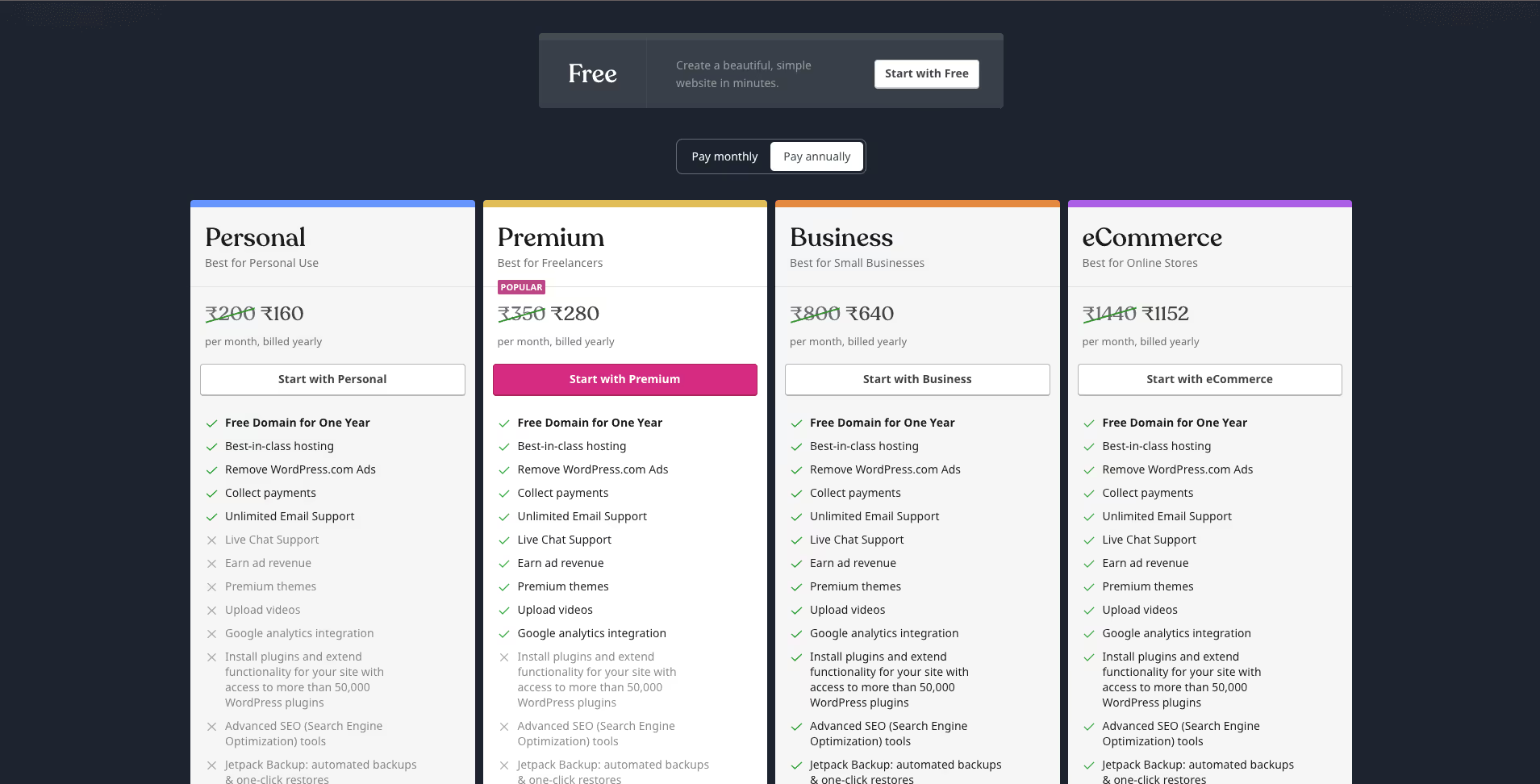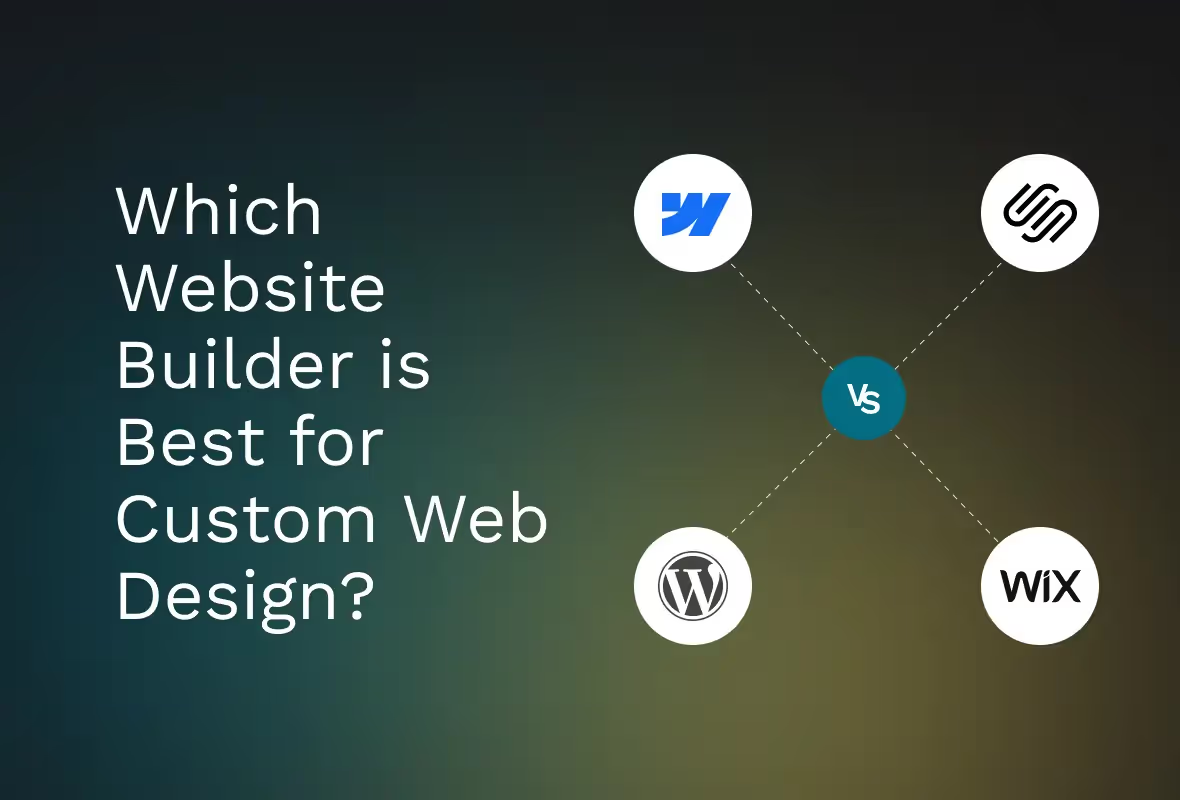WordPress is an open-source web builder platform that offers themes and plugins for advanced functionalities. WordPress made its debut in 2003, and it continues to beat its alternatives like Blogger and Medium to be a preferred alternative as a blogging platform.
Thanks to its rich library of plugins, it also offers other web solutions like eCommerce stores and business websites. The software is free to use. But, one has to pay for hosting and domain to use a WordPress site.
In contrast, Webflow is a complete SaaS application that provides hosting solutions and advanced web development capabilities. Webflow began its journey in 2013 when co-founders Bryant Chou, Vlad Magdalin, and Sergei Magdalin came up with the idea of no-code website building.
Soon enough, Webflow emerged as an intelligent solution to create robust and responsive web solutions. Though other no-code solutions are available, that's a story for another day.
Today, let's dive into the must-read differences between Webflow and WordPress.
Difference Between Webflow and WordPress: A Detailed Comparison
At a Glance:
This is a quick comparison between Webflow and WordPress

Webflow vs WordPress: Which Offers Better Design Flexibility?
WordPress
WordPress offers several paid or free themes for website layout. You have three design routes when using WordPress.
- DIY website: You will require intermediate coding knowledge to create a website using WordPress plugins and page builders.
- Template Website: Using a template is like plug-and-play. But, the limiting factor is that you can only edit the existing themes if you know the coding.
- Custom Website: Expert-level coding knowledge is required where you don't use existing templates but hand-code all design and functionality aspects.

Suppose you edit your chosen theme for colors and fonts. Even then, the templates will retain their structure, as seen in the images above. This is where Webflow shines.
Webflow
With Webflow, you can use more than just premade templates. But also customize them easily to cater to your unique needs. You only drag and drop your preferred design elements, and the code is automated.
Webflow offers to design and code at the same time. Developers will quickly gauge how their HTML elements map to corresponding CSS styling controls in Webflow. Plus, Webflow is built on classes, so reusability is never an issue. Finally, Webflow creates custom interactions and animations with its powerful visual builder. The result is immersive websites with little coding.
Webflow vs WordPress CMS: Which One is More Efficient?
WordPress
Although highly popular for blogging, WordPress has its own limitations. For every other functionality, you need a plugin. Add too many plugins, and you risk slowing down your load speed. Plus, installing updates and patches of these plugins makes the efficient use of your time and resources difficult.
Some core content requirements, like interactive content and SEO optimization, call for plugins. The CMS is not designed to be flexible in accommodating today's rich content needs. For instance, you need plugins to add recipes, events, or other content. Otherwise, the result is a poor user experience.
Webflow
On the other hand, Webflow has been created as a content-driven CMS. Moreover, you can alter the layout based on your rich content needs.
Editing content on the platform is straightforward with Webflow Editor. Your team members and clients can edit the content on the go, and you can track changes. More so, the layout can alter based on content requirements. That means your creativity is never stifled with the content format or post types.
Webflow has built-in SEO functionalities. You can edit Meta Titles, Meta descriptions, and slugs without logging into a dashboard.

Webflow vs WordPress for E-commerce: Which Platform Wins?
WordPress
You need to install and set up a dedicated plugin to leverage eCommerce functionalities with WordPress. For example, WooCommerce.

Yet, talk to any experienced store owner. They won't recommend WordPress for scaling your eCommerce business. Slow loading, cache issues, or server configuration issues are common problems when you use the most popular WooCommerce plugin. If you genuinely want to magnify your business prospects, you need a platform that was natively designed for eCommerce stores.
Webflow
However, WebFlow offers inbuilt powerful e-commerce features like payment integrations, customized emails, or tailored shipping rules. You can also keep track of order returns and refunds. More so, Webflow empowers you to create unique product fields and highlight noteworthy features in your digital/physical product.
In a nutshell, you can deliver a cohesive customer experience that completely caters to your brand instead of being limited by your coding prowess.

Webflow vs WordPress: Do You Need Plugins for Advanced Features?
WordPress
WordPress has been in the market for a long time and has a rich library of plugins. But, all plugins are not created equal. Even those offering the same functionality will differ in their services and delivery. Hence, choosing the right plugin, free or premium, will largely determine your success with WordPress.
Generally, technical know-how is needed to choose and install these plugins. This can be a major roadblock for non-technical folks. Add to it the timely updates and security patches these plugins release. And you can end up with an extensive ongoing maintenance schedule.
Webflow
Webflow developers experienced these issues first-hand while setting up WordPress, Drupal, and Joomla for their clients, before the birth of Webflow. Therefore, they ensured Webflow was as streamlined and optimized as possible. As most functionalities are provided out-of-box, Webflow is a powerful, comprehensive solution for your (client's) online business needs.
For instance, the plugin in WordPress isn’t needed in Webflow because it’s an inbuilt functionality here.
Webflow or Wordpress Integrations: Which One Supports More Tools?
WordPress
WordPress allows for third-party integration by embedding relevant code snippets. For instance, you can integrate your favorite automation tool to collect leads, add them to your CMS, and send automated welcome emails. But guess what? These integrations, for example, OptinMonster, begin at a bare minimum of $348/year. And what if you need to switch one of the integrations? You will have to consider compatibility issues with multiple integrations. Plugin conflict is yet another challenge for WordPress users.
Webflow
Webflow offers third-party integrations as well with the help of Zapier.
But, it caters to core functionalities with native solutions. For instance, a native solution called Logic allows powerful automation based on custom flows. You can rely on Flow Editor to construct, test, and reuse your automation flows. Set your custom condition-based triggers and the corresponding actions to experience easy yet potent automation. You can also add external tech stacks like databases to your automation routines to leverage Logic to its most.
Webflow vs Wordpress hosting: Which One Loads Faster?
WordPress
Did you know the cost of downtime for small and medium businesses was estimated to be $137 to $427 per minute? An online business with a server outage means zero traffic leading to zero sales. The bottom line is you need reliable hosting with minimal downtime.
You need to buy a domain name and hosting plan when using WordPress. Depending on your hosting, your scaling capabilities and uptime will vary. Therefore, you will have to make a judicious choice based on your storage requirements, budget, and features available for a given plan.

Webflow
Webflow offers an excellent self-hosting feature that minimizes downtime and allows easy scaling. You will need a custom domain and choose a site plan that fulfills your requirements.
You don't have to deal with extensive backend coding only to realize your website can't handle traffic spikes or face DNS issues. With Webflow, the enterprise servers are distributed globally with AWS Infrastructure, and your website visitors will get the maximum speed possible. More so, Fastly offers CDN, Security, and Network features to accelerate your page load speed.
Why Webflow is Better Than WordPress for Beginners
WordPress
WordPress still needs to be figured out for average folks with tons of plugins and integrations. Choosing these solutions, installing, and maintaining them can be challenging. At best, you can always redirect your resources to create more innovative solutions instead of handling these maintenance and upkeep issues.
Webflow
Webflow has its learning curve if you have yet to gain experience with web development or design. But, if you have the right help, Webflow can get pretty straightforward.
The core difference is post-publishing maintenance that gets smooth with Webflow in contrast to WordPress, where backend maintenance is a headache.
Web flow vs Wordpress Pricing: Which One is More Cost-Effective?
WordPress
The core WordPress software is free. But, as discussed earlier, you need to buy hosting and a custom domain. WordPress pricing will vary based on your hosting provider. Plus, your purchased plugins and integrations can be fairly costly as well. These costs can quickly add up to become expensive.

Webflow
On the other hand, Webflow offers a straightforward pricing model. Of course, you pay for your domain name, but you definitely eliminate the cost of dozens of plugins while using Webflow.
You can choose plans per your requirements. For example, you can get a webflow.io domain with the free starter plan. The other plans start at $14/per month and go up to $39/per month. Each plan caters to a different user base and has requisite features. You can also request pricing for Enterprise requirements.

Webflow vs. Wordpress: Which Has Better Community and Support?
WordPress
WordPress has a thriving community of developers that ship plugins and themes. In addition, you can get phone support and live chat support from the platform. Being an open-source platform, the community game of WordPress is high. You can find helpful resources for the DIY route or hire a WordPress developer.
Webflow
Webflow, on the other hand, is a growing base of web developers, designers, and business owners who want to leverage the cutting-edge technology of Webflow. In addition, phone support and live chat options are available on the official site. Finally, Webflow offers Webflow University and Webflow TV, designed for novice developers to learn everything about Webflow.
If you buy the enterprise plan, you will also get customer success manager to help start with Webflow.

Webflow versus Wordpress : Which One Should You Choose?
Webflow is a modern alternative to WordPress. Irrespective of your technical knowledge, Webflow has exceptional features to use on the go. You can have seamless and immersive web solutions for your needs without spending weeks on development or testing with Webflow.
If you get stuck, you can always rely on experts to move ahead. Plus, you can stay tuned with us as we're committed to demystifying Webflow for developers, designers, and marketers alike. So whether you're a CTO or an upcoming developer, we're confident you'll enjoy hanging out here.
So, this was all about Webflow versus WordPress. What's your pick and why?







.png)